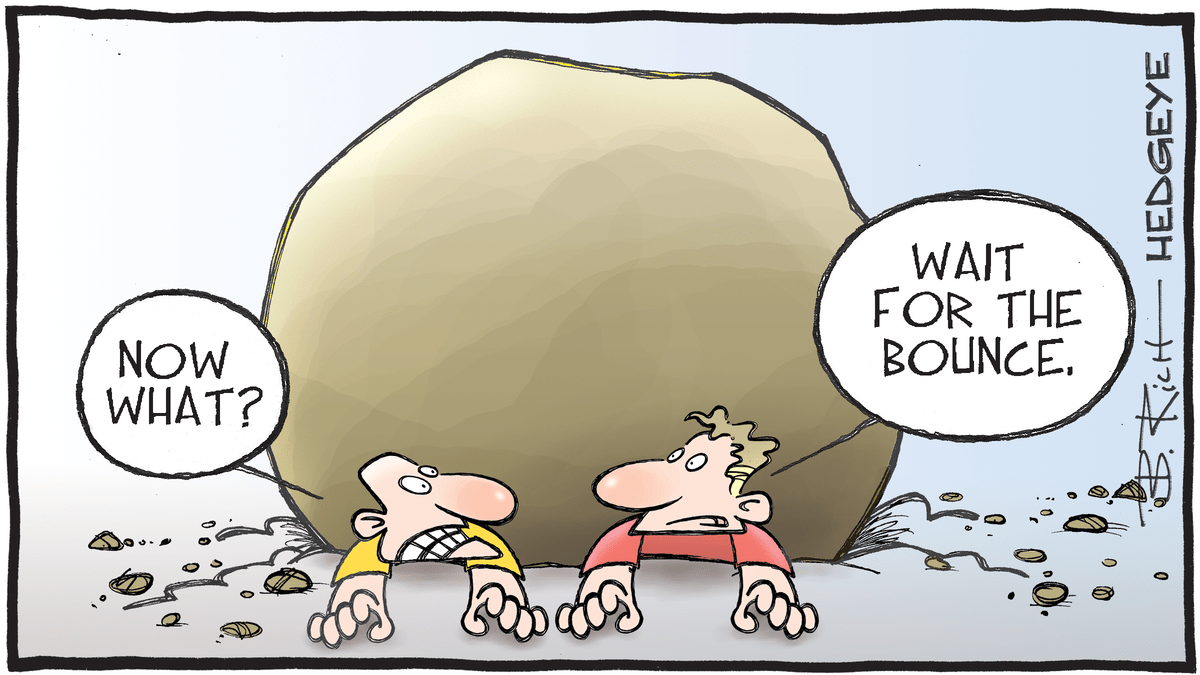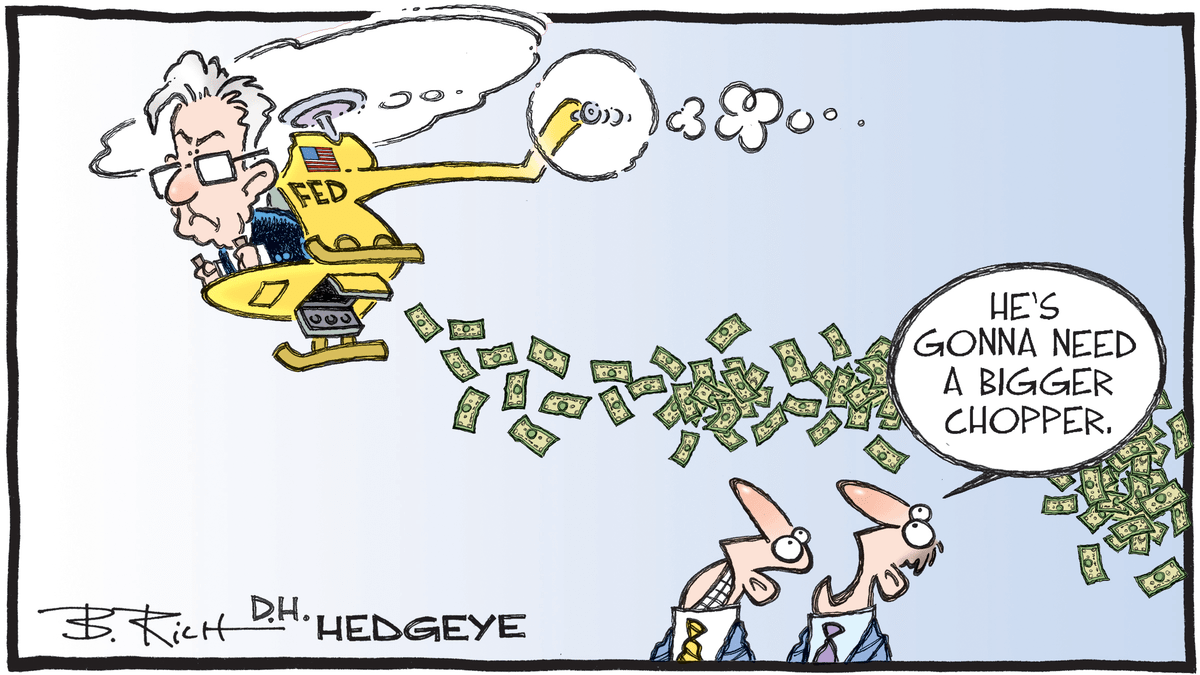“50-Cent” Shifts Away From VIX ‘Catastrophe Insurance’: “Gold Is Now The Right Place To Be For Battles Ahead”
Having ‘come out’ as the infamous VIX-whale “50-Cent,” London-based fund manager Jonathan Ruffer has called it quits on his VIX-call-buying strategy:
“In sum, the catastrophe insurance did absolutely everything that might be expected of it. And it is now spent. It is likely to be some time before this insurance again prices at levels that makes it attractive as a defensive investment.“
So what is he looking at now, and what does the future hold?
The next defence was – and still is – a position in credit spreads. These spreads reflect the difference in yield between, say, a government bond, and a high-quality corporate bond. For years the spreads had been falling – a phenomenon which occurred in the UK in 1936 – and for exactly the same reason. As interest rates came down, the reality of the diminishing income was more eloquent than the shadow of the fear that a less-sound borrower might default. Victorian grandees wanted to know what their future daughters-in-law were worth – worth was expressed as an income figure, not as capital – and her Ladyship would want a second question answered: was this income from government Consols, or something flakier?
Our investments in credit spreads have protected the overall values of the portfolios, as conventional asset prices have tumbled. As I write, there still seems a good deal more mileage in this idea – we had positioned ourselves just outside the ‘safest’ corporates, as these could be the beneficiaries of Federal Reserve intervention. The Fed has intervened, and it will be interesting to know whether this does in fact stabilise the corporate bond market.
Our equities have borne the brunt of the grief, as they did in Q4 2018, falling by every bit as much as the overall indices. We were caught out then because action by the Fed meant that the markets recovered sufficiently to neutralise the effectiveness of our protective investments. This time round, our equity positions would have saved us a fair bit of money if they had performed better. It is worth peering into this part of the portfolios. Commentators divide the market into ‘momentum’ – stocks whose share price pattern is favourable – and value. Generally speaking, the best companies will be in the momentum bucket, and Fred Karno’s army relegated to value.
For the last decade, the gulf between momentum and value stocks has grown wider, and unprecedently so. Some of this may well be justified, as the techie carnivores eat up the Laura Ashleys of this world. But much of it is due to the fact that, recently, more money has come into equity markets through ETFs (exchange traded funds, a passive move to ‘buy the index’) than by specific analysis of each company’s prospects. Many have laughed bitterly at the fund management industry for being sent to the cleaners by index performers. It’s true that we are pretty hopeless, but one would expect a cheap ETF to be in the middle of the fifth decile (about 45th out of a hundred) – its performance median, but, being cheaper, better than an active fund manager who is trying to do the same thing. It feels to us as if the ETF phenomenon is beginning to unravel: they do not always trade at asset value any more, and there could be widespread liquidations. As this happens, momentum stocks will lead the markets lower, since that is where the indices are most heavily weighted.
There was more to our emphasis on ‘value’ stocks, than the ‘less bad’ aspect. The unprecedented monetary looseness in the period since the 2008 crisis has always meant that the economy might find traction – and if it had done, then these companies would have prospered, some of them mightily. Ironically, we believed that 2020 itself was going to be a year when world economies coordinated into a pattern of significant growth. Just as the fat lady reached for the high C, the platform collapsed.
Elsewhere, gold has been somewhat disappointing, with its performance weighed down by forced sellers.
But we think gold is the right place to be for the battles ahead.
Where do we go from here?
Mercifully, I have left myself little space for the humiliation of calling the future. Until the market becomes calmer, it will suffer all the vagaries of a civil war.
The biggest danger comes from an overwhelming desire in all of us to ‘buy the dips’.
In the old days, that was right – and wrong – pretty much 50% of the time.
Since Alan Greenspan, chair of the Federal Reserve, began medicating the markets after the 1987 crash, it has always – always – been right to do so.
Not many of us old-timers who acquired our hard wiring before 1987 are left; I started as a stockbroker in 1972, when a falling stock market was friendless, and bad news was pretty much just that – bad.
Buying the dips is predicated on the assumption that bad news is in fact good news since it opens up Uncle Sam’s pocketbook. Now debt is so great, and the promises needed so egregious, that there has to be a question mark over the efficacy of the pocketbook.
Any loss of confidence in the value of the collateral will manifest itself in a fear of inflation, since money is an expression of confidence in a token (fiat money, it is called – the divine ‘let it be’) – and if that confidence is lost, it ceases to do its job as a store of value.
What is clear is that central banks and governments will use whatever firepower they have – even if it turns out that their cheques are blank.
Accordingly, we have increased again our holdings in inflation-linked bonds (notably in the US). These will be a proper protection against a grinding bear market in money, in savings, in prosperity. The time is moving on from a world where we had to protect against sudden shocks – catastrophe insurance is behind us, job done. The investment landscape is going to become much more familiar, but it will only be a homecoming to the greybeards (what’s the gender neutral word for this? The mind boggles) who have lived it before.
Thirty-three years is a long detour – and for many it will have proved a cul-de-sac. It is difficult to master old tricks, secondhand, but my prediction is that it will prove a valuable quality over the next longish while.
Lastly, I want to express a personal view. It’s one which reflects that of all of us at Ruffer – of gratitude to you for sticking it out over the lean times. To do so, you had to trust us that a shock was on the way, and that we would rise to meet it. (I had more confidence in the first of those than the second…). The battle to keep clients safe is not won – alas, it is never won. But the first onslaught of a bear market has been successfully navigated, and this review ends with a reiteration of our investment priorities – first and second, to keep portfolios safe, third, to make them sing.
* * *
In January – amid the roaring meltup in stocks – Ruffer proclaimed:
“the central plank of what we’re doing – that there’s a dislocation ahead, speaking of wealth-destruction and illiquidity – well, our sureness of that makes us lions!”
His firm’s philosophy is built around the fact that clients love making money, but they hate losing it more than they like making it… something we suspect many “gurus” who have ‘come-up’ in the last decade of central bank largesse are about to discover this lesson the hard way.
Tyler Durden
Thu, 04/02/2020 – 18:05
via ZeroHedge News https://ift.tt/3aEcyX3 Tyler Durden


